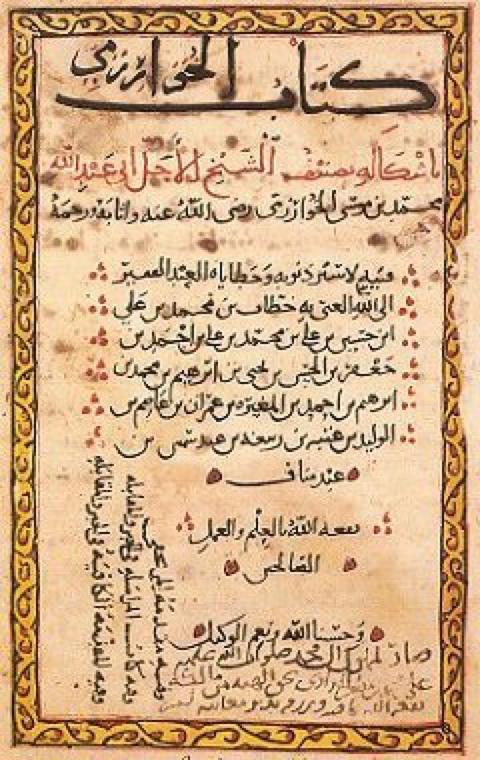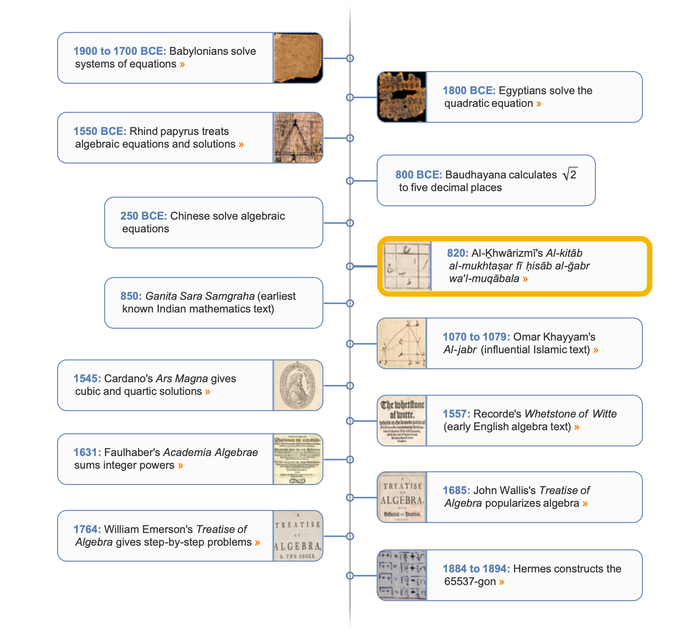around 820
Al-Khwārizmī's Al-Jabr
Landmark work that established and named algebra
Al-kitāb al-mukhtaṣar fī ḥisāb al-ğabr wa'l-muqābala (The Compendious Book on Calculation by Completion and Balancing), known as Al-Jabr for short, was a landmark work in the history of mathematics written by Persian polymath Muḥammad ibn Mūsā al-Khwārizmī around 820 CE.

Al-Jabr established algebra as an independent discipline of study and is so central to the formulation of algebra that the term "algebra" itself is derived from the book's title. The work provided an exhaustive treatment of determining the positive roots of polynomial equations up to second degree with positive coefficients. The most famous page demonstrates the solution of the quadratic equation x² + bx = c by means of a diagram that determines the root by erecting rectangles on a central square and completing the square using smaller squares bordering those.





